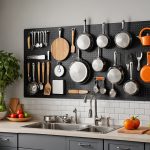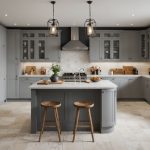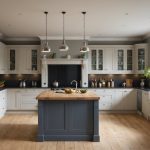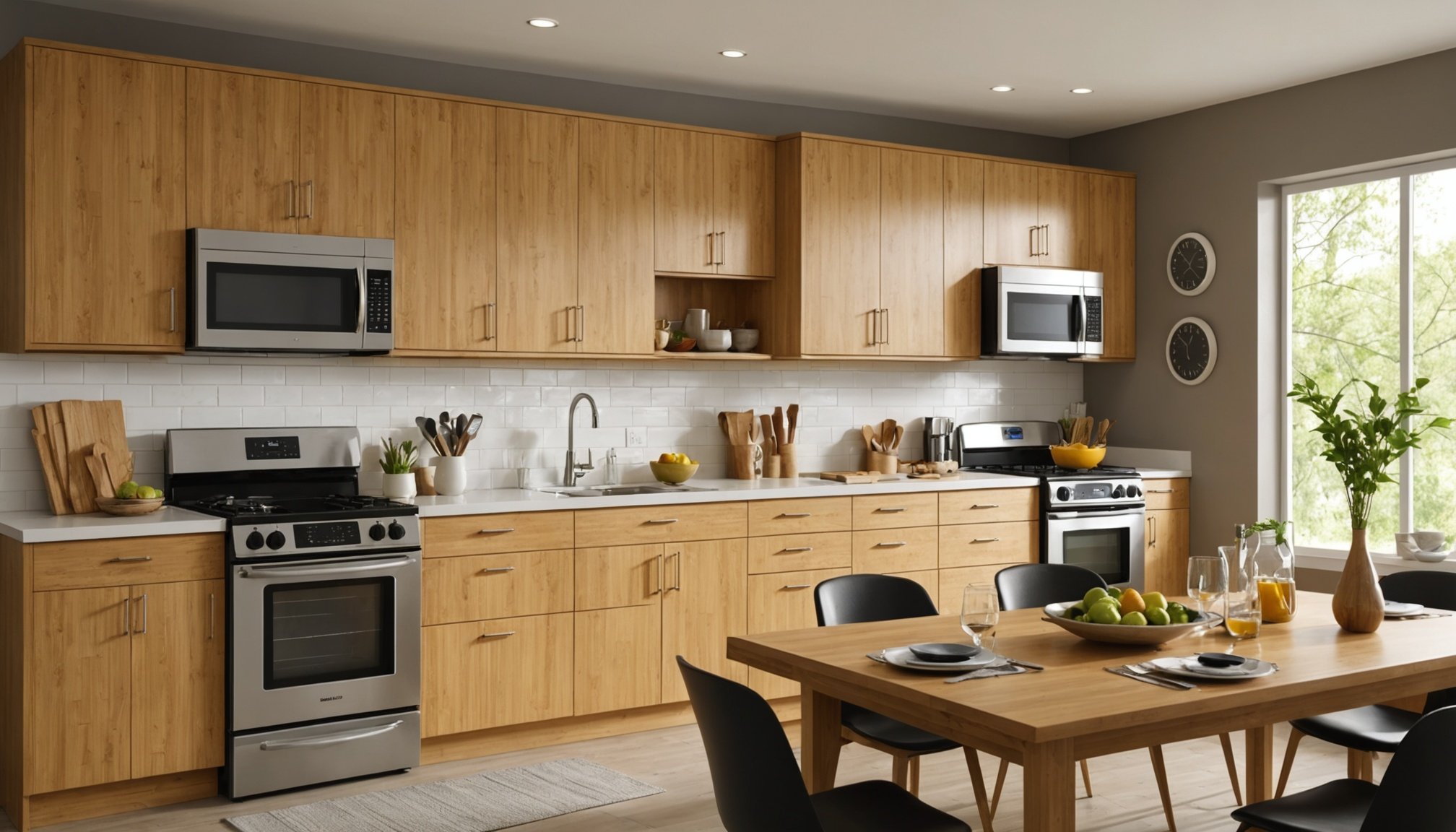Benefits of Bamboo in Kitchen Design
Choosing bamboo in kitchen design offers numerous advantages, beginning with its status as a highly sustainable material. Bamboo grows rapidly, maturing in just three to five years, in contrast to hardwoods which can take decades. This rapid growth not only makes bamboo a renewable resource but also reduces its environmental footprint, as it requires fewer resources and less land to cultivate.
Moreover, bamboo contributes to an eco-friendly design in kitchens, as it absorbs more carbon dioxide compared to other wood, releasing increased amounts of oxygen. This capability aids in improving air quality and combating climate change, aligning with environmentally conscious living principles.
Also read : Designing an inclusive kitchen: innovative tips for wheelchair-friendly spaces
From an aesthetic perspective, bamboo’s natural tonality and grain patterns enhance diverse kitchen styles, from modern minimalist to rustic charm. Its light, neutral hues provide a versatile palette that can complement various colour schemes or design elements.
In terms of durability, bamboo is remarkably robust. It often surpasses traditional materials like oak or maple in terms of longevity. This strength ensures that bamboo kitchen products, such as countertops and cabinets, can withstand daily wear and tear, offering lasting beauty and functionality in your culinary space. Selecting bamboo thus ensures both style and sustainability in the heart of your home.
Additional reading : Mastering multi-zone kitchen design: your essential guide to creating spaces for varied cooking experiences
Incorporating Bamboo Flooring
With home renovations increasingly leaning towards eco-friendly solutions, bamboo flooring has become a popular choice. Its versatility and sustainability make it an excellent option, especially in kitchens.
Types of Bamboo Flooring
In the realm of bamboo flooring ideas, three primary types stand out, each with unique characteristics. Strand woven bamboo is renowned for its durability, making it a top pick for areas with heavy foot traffic, like kitchens. Horizontal bamboo showcases the natural growth rings, offering a more traditional look. For a sleeker appearance, vertical bamboo aligns the strips vertically, presenting a modern aesthetic.
Installation Tips
Embarking on the journey of kitchen flooring installation can be daunting. To ensure success, start with a clean, dry subfloor. Use moisture barriers to prevent damage, especially in the kitchen environment. Precision is vital, so measure the area carefully before cutting. Follow the manufacturer’s instructions for adhesive or click-lock systems to ensure a secure fit.
Maintenance and Care
Proper upkeep prolongs the life of bamboo floors. Regular sweeping or vacuuming minimizes scratches. When it comes to cleaning, a damp mop suffices—avoid excessive water, as bamboo is sensitive to moisture. Products explicitly designed for sustainable flooring options are advisable. Using floor protectors under furniture helps maintain your floor’s pristine condition.
Bamboo Cabinetry Options
In the pursuit of a modern kitchen, bamboo cabinets stand out as a chic and eco-friendly solution. Offering an array of styles from sleek minimalistic designs to more traditional finishes, bamboo cabinetry enhances both aesthetics and sustainability. These cabinets are available in a range of colours and textures, allowing homeowners to match their kitchen’s design seamlessly.
Customization is a key feature of bamboo cabinets, providing homeowners with the ability to tailor their kitchen cabinetry to fit specific preferences and needs. Whether opting for a clouded glass finish or integrating soft-close mechanisms, the possibilities are nearly endless, ensuring that each kitchen maintains functionality alongside style.
Bamboo cabinetry is not only visually appealing but also stands as a testament to environmentally responsible choices. The quick renewal rate of bamboo and its minimal impact on reforestation make it an excellent choice for green kitchen solutions. Moreover, the manufacturing processes involved in creating bamboo cabinets often utilise non-toxic adhesives and finishes, further emphasizing their ecological benefits.
When selecting bamboo cabinets for your kitchen, consider their durability, versatility, and eco-friendliness. Choosing bamboo not only supports environmental conservation but also adds a touch of timeless elegance to your home.
Bamboo Kitchen Utensils and Accessories
Bamboo kitchen utensils are gaining popularity as a sustainable and eco-friendly kitchen tools option. These natural products are a practical choice for everyday cooking, offering advantages over their plastic and metal counterparts. Bamboo kitchen utensils are lightweight, durable, and resistant to staining, making them ideal for regular use. Additionally, bamboo’s natural antibacterial properties ensure a hygienic kitchen environment.
When exploring bamboo kitchen accessories, consider essentials like bamboo cutting boards, spatulas, and serving spoons. These tools not only enhance functionality but also add a natural aesthetic to your kitchen. Bamboo trivets and salad tongs are also popular choices, providing both style and practicality.
Choosing bamboo products involves recognizing their positive environmental impact. Bamboo grows rapidly without the need for pesticides or fertilizers, making it a renewable resource. Using bamboo kitchen utensils contributes to reducing deforestation and lowering your carbon footprint, helping to preserve our planet for future generations.
Incorporating bamboo products into your daily routine is a simple yet effective way to make a significant difference. As these eco-friendly kitchen tools replace disposable plastics, they underline the importance of sustainability and the shift towards greener living solutions. Making informed choices about kitchen accessories can be both beneficial and rewarding.
Inspiring Bamboo Kitchen Transformations
Transforming your kitchen into a stylish and sustainable bamboo haven can be both exciting and inspiring. By exploring real-life examples, you can gather ideas and envision what your kitchen could become.
Case Studies of Bamboo Kitchens
Explore captivating case studies that showcase before and after kitchen designs using bamboo. From small urban apartments to spacious country kitchens, bamboo has been utilised effectively to breathe new life into outdated spaces. One example features a compact city kitchen where bamboo cabinets replaced old, chipped units, instantly elevating the room’s warmth and charm. Highlighting bamboo’s versatility, these transformations exhibit its ability to both modernise and harmonise with existing elements.
Visual Transformation Ideas
By examining visual examples of bamboo kitchen inspirations, you can uncover endless possibilities for your own space. Imagine a once dreary kitchen now brimming with light due to bamboo accents. Tiles, countertops, and utensils made from bamboo create an exquisite visual synergy. Incorporating these ideas provides a fresh perspective on designing a green, stylish culinary space.
Integrating Bamboo with Other Materials
Blending bamboo with other materials allows for a more dynamic kitchen design. Pairing bamboo with elements such as stone, metal or glass establishes a balance between natural and contemporary aesthetics. For instance, a bamboo island can be beautifully contrasted with sleek, stainless steel appliances, marrying nature with modern functionality in a graceful way.
Purchasing and Sourcing Bamboo Products
When you decide to buy bamboo products, diving into the world of eco-friendly stores is a rewarding experience. To find top-quality bamboo kitchen supplies, it’s important to explore reputable sources both online and locally.
Start your search with specialised eco-friendly stores known for sustainable practices. Such stores often focus on ethically sourced materials, ensuring that your bamboo kitchen supplies meet high environmental standards. Consider visiting local markets or fairs specializing in handmade, sustainable goods for unique finds.
Among online retailers, a handful have gained a stellar reputation for their commitment to sustainability. Websites dedicated to eco-conscious living stock an impressive array of bamboo products, from utensils to cutting boards. Compare options by focusing on verified customer reviews and certifications that affirm sustainable practices.
Price range is another key factor. Bamboo kitchen items generally offer good value, balancing durability with affordability. While prices can vary, essential items like utensils and cutting boards are typically modestly priced, whereas larger pieces such as furniture might demand a higher investment.
Embrace the versatility and sustainability of bamboo by making informed purchases. With the right insights, you’ll not only enhance your kitchen with beautiful products but also support eco-friendly initiatives, one bamboo purchase at a time.











